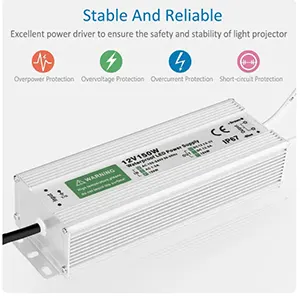Lighting the Way Forward
In recent years, LED technology has grown from a niche lighting solution into a global standard. From homes and offices to public infrastructure and commercial spaces, LED systems are shaping how the world sees light literally and figuratively. Behind this transformation lies a complex network of manufacturers, exporters, and distributors working to meet the evolving demands of global consumers.
Among the most dynamic segments in this sector are LED strip lights and power supply systems, each playing a vital role in performance, adaptability, and long-term efficiency.
The Rise of LED Strip Lights in Global Markets
LED strip lights are no longer limited to decorative lighting. Their slim profile, energy efficiency, and flexible installation options have earned them a place in various industries. Today, they’re seen in automotive designs, under-cabinet kitchen lighting, commercial signage, and even large-scale architectural projects.
As global interest grows, the role of a LED Strip Lights export company becomes central to bridging the gap between large-scale production and international market expectations. These companies focus on consistent product quality, bulk packaging, and compliance with certifications, enabling designers and contractors across continents to integrate strip lighting seamlessly into their projects.
Customization and Versatility: What Buyers Look For
One key reason for the widespread adoption of LED strip lighting lies in its customization potential. Buyers, especially those working on commercial or industrial-scale projects often need specific color temperatures, IP ratings for moisture resistance, voltage compatibility, or even custom reel lengths.
The ability to provide tailored solutions has become a defining trait for global suppliers. For instance, a retail display designer in Europe may require ultra-warm white light for a luxury ambiance, while an engineer in Southeast Asia might be seeking a waterproof solution for outdoor signage. Catering to such diverse needs involves not just manufacturing capacity but also clear technical documentation and dependable shipping processes.
Powering Performance: The Backbone of LED Systems
While the visual appeal of LED strip lights often takes the spotlight, the performance behind the scenes matters just as much. A lighting system is only as reliable as its power source. Faulty or mismatched power supplies can lead to flickering, overheating, or premature failure issues that affect both performance and safety.
This is where the role of a LED Power Supply distributor becomes especially critical. Distributors ensure that systems receive the right voltage, wattage, and protections to operate effectively in their intended environments. From constant voltage drivers to intelligent dimming functions, the selection and availability of power supplies directly impact the reliability of the final installation.
Matching the Right Components: Power Supplies & Strip Lights
A successful LED lighting setup is not just about putting components together it’s about making sure they’re engineered to work as one. Matching strip lights with appropriate power supplies involves a series of technical considerations: load capacity, voltage drop, connection types, and whether or not dimming control is needed.
Distributors play a valuable role in helping installers and contractors make these decisions, particularly in large projects where the margin for error is minimal. The right pairing extends product lifespan, maintains brightness consistency, and reduces maintenance calls, an especially important factor in commercial settings.
Global Distribution and Supply Chain Considerations
As LED products become global commodities, the supply chain behind them must evolve to match. Export companies and distributors are expected to meet international standards not just in product performance but in logistics and documentation as well.
That includes ensuring products are packaged securely, come with required certifications like CE or RoHS, and meet customs compliance for the destination country. Moreover, consistent inventory, real-time communication, and after-sales support are becoming defining factors that influence buyer trust and long-term collaboration.
In some cases, regional variations also come into play. Voltage standards, climate conditions, and consumer preferences can all influence the kind of LED lighting solutions that are in demand. Suppliers who stay informed and agile are better positioned to offer value that goes beyond just the product.
Adapting to Evolving Lighting Needs
As the LED industry continues to evolve, the focus is shifting beyond brightness and energy savings. Today, lighting solutions are expected to be smarter, more adaptable, and more integrated into broader systems think motion sensors, smart controls, and energy monitoring.
Both export companies and distributors have a role in this shift. They are not just moving products across borders, they’re helping shape how the world experiences lighting. From customized LED strips for luxury interiors to robust power supplies for industrial signage, every link in the supply chain contributes to a larger story: one of efficiency, innovation, and sustainability.




